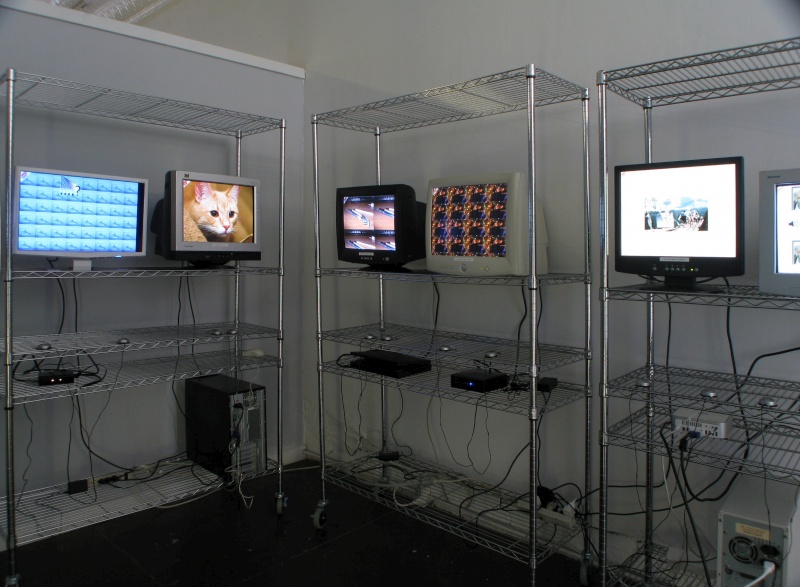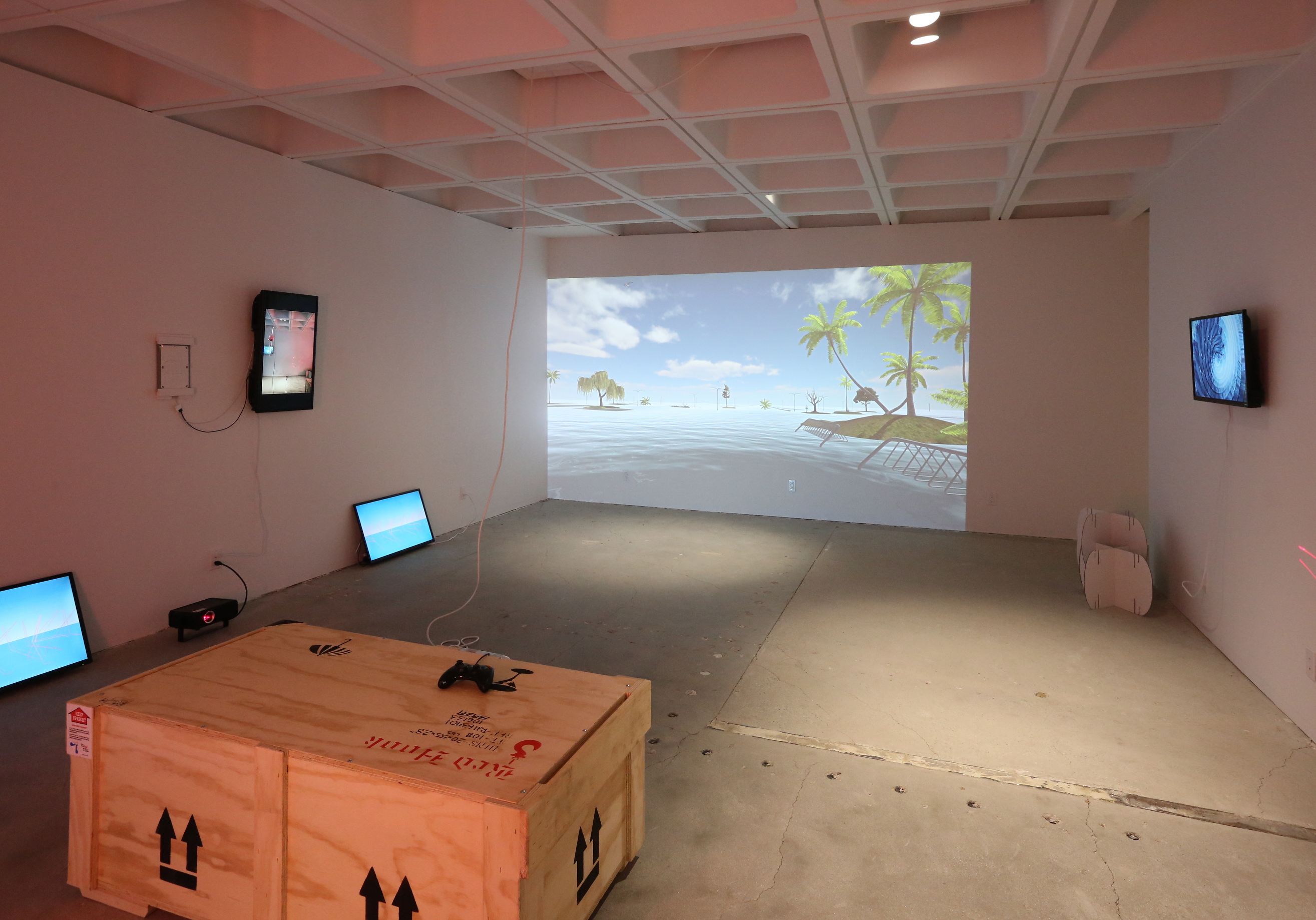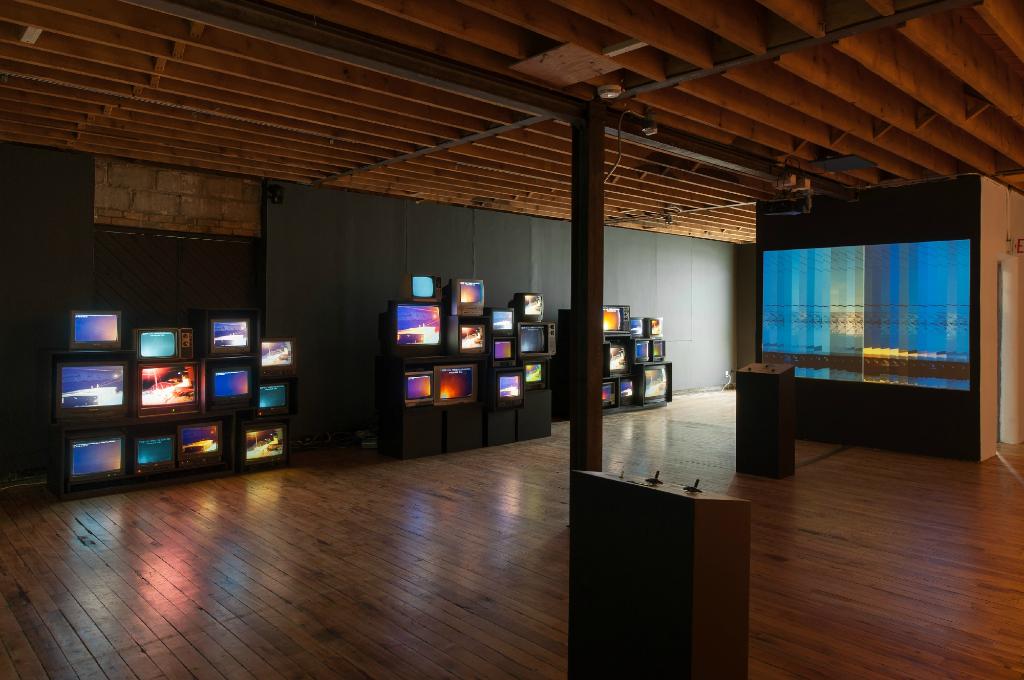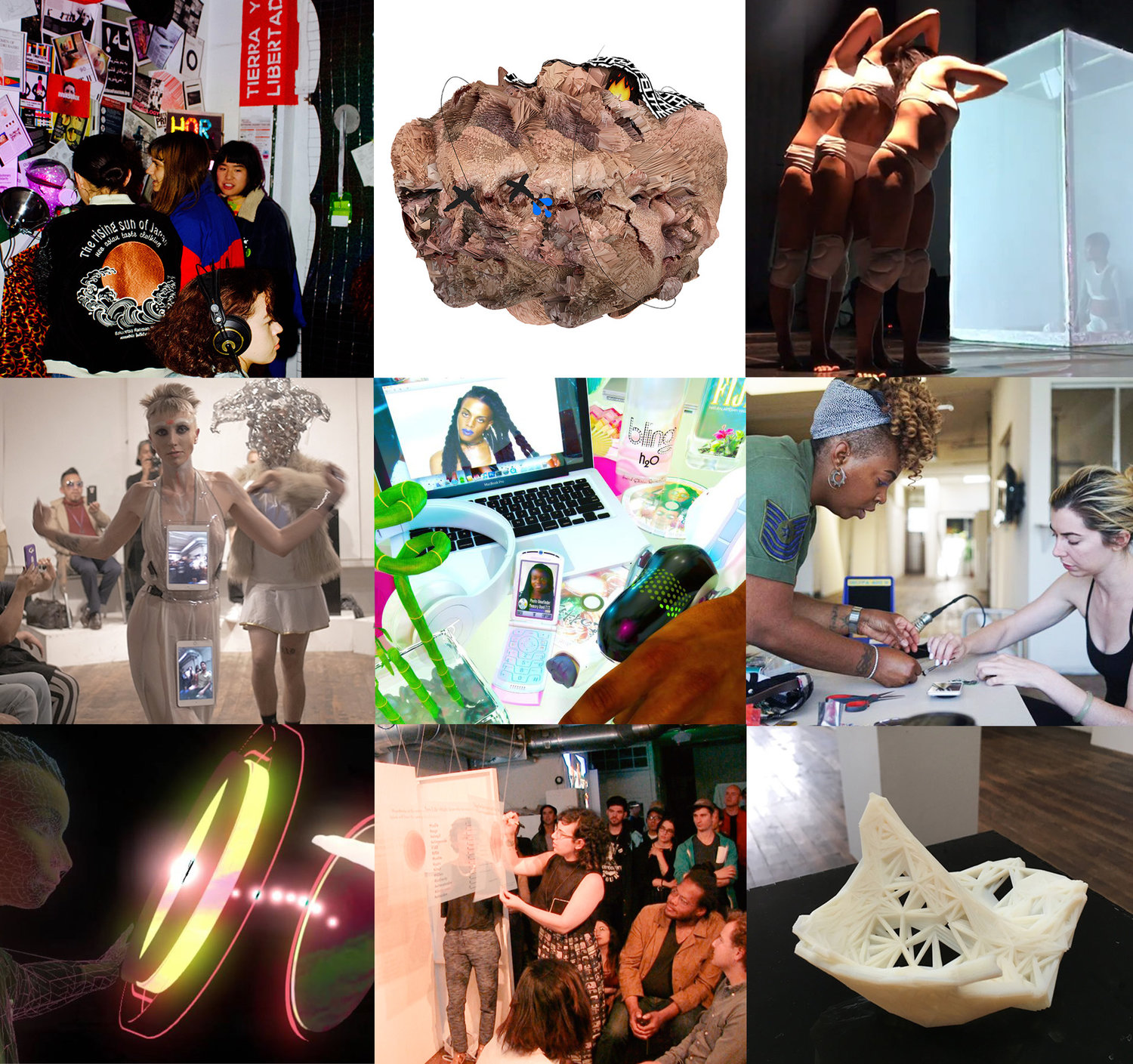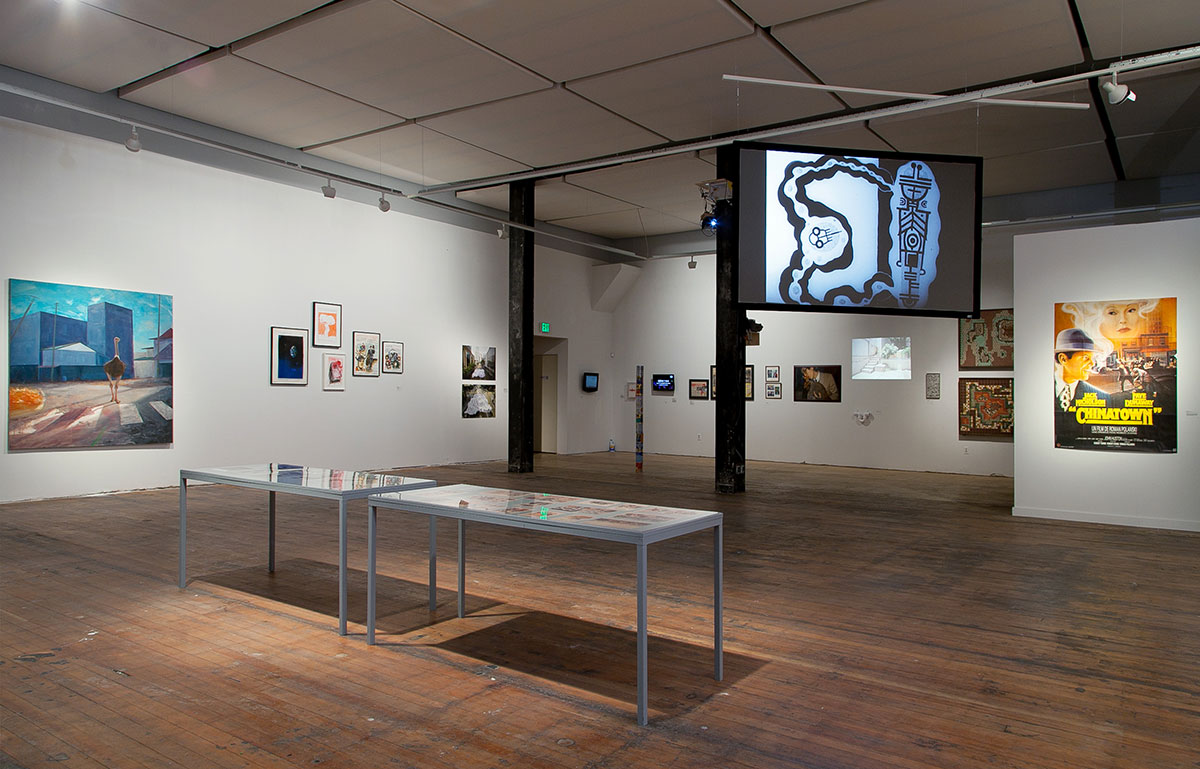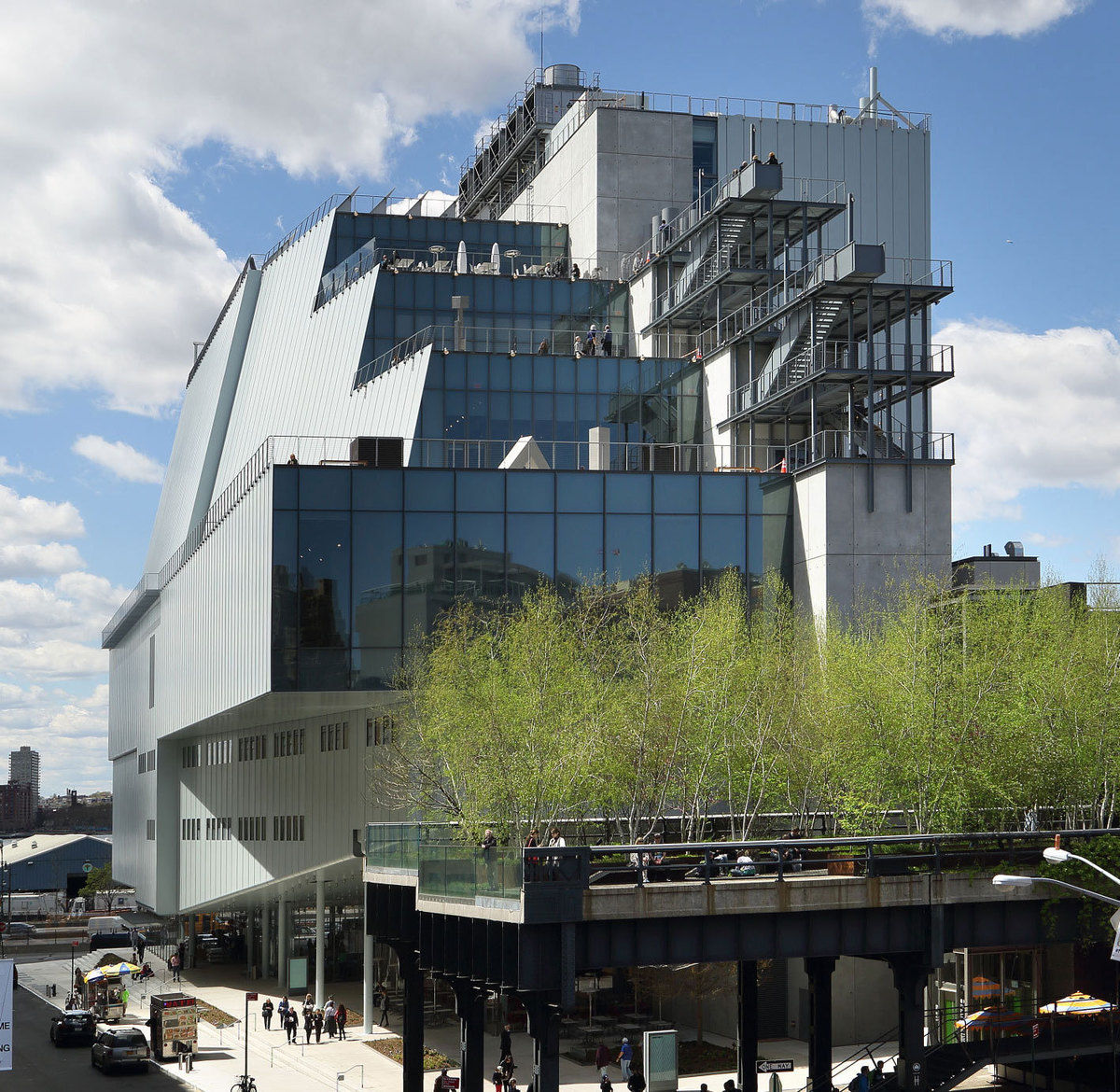Rhizome champions born-digital art and culture through commissions, exhibitions, digital preservation, and software development. Founded by artist Mark Tribe as a listserve including some of the first artists to work online, Rhizome has played an integral role in the history of contemporary art engaged with digital technologies and the internet. Since 2003, Rhizome has been an affiliate in residence at the New Museum in New York City.[1]
Squeaky Wheel Film & Media Art Center is an artist-run, non-profit, media arts center based in Buffalo, New York. Founded in 1985, the organization provides the Western New York region with low-cost media equipment rentals, media arts education for youth and adults, residencies for artists and researchers, and exhibitions, screenings, and other public programming. [1]
Squeaky Wheel Film & Media Art Center has a mission to continue a legacy of innovation in media arts through access, education, and exhibition. We envision a community that uses electronic media and film to celebrate freedom of expression and diversity of voice.
Established in 1985, Squeaky Wheel Film & Media Art Center is the only organization in Western NY to offer education, equipment access, and exhibition programming dedicated to exploring film & digital media arts. Squeaky Wheel’s reputation in the media arts field continues to grow nationally and internationally. We have won awards for Best Workshops of Any Kind (2010); Best Curation (2012); Best Youth Workshops (2013) from regional publication, Buffalo Spree Magazine of Western New York. In 2014, the Arts Services Initiative of Western New York nominated Squeaky Wheel “Cultural Organization of the Year”. [2]
Mute is an online magazine dedicated to exploring culture and politics after the net. Mute combines biannual issues dedicated to specific topics (Precarious Labour, The Knowledge Commons, etc) with regularly updated articles and reviews. The site also features ongoing coverage of relevant news and events contributed by ourselves and our readers.
As well as the online magazine, Mute also publishes a biannual magazine in print (aka Mute Vol. 3), which features selections from current issues together with other online content, specially commissioned and co-published projects.
Mute magazine was founded in 1994 to discuss the interrelationship of art and new technologies when the World Wide Web was newborn. But, as mass participation in computer mediated communications has become more integral to contemporary capitalism, its coverage has expanded to engage with the broader implications of this shift. Mute’s investigation of the social, economic, political and cultural formations of ‘network societies’ maintains an accent on the relationship between technology and the production of new social relations. At the same time, the magazine’s remit has grown broader and now includes analyses of geopolitics, culture and contemporary labour that, while necessarily inflected by contemporary developments in technology, go far beyond this.
While Mute was born out of a culture that celebrated the democratising potential of new media, it becomes ever more apparent that we need to critically engage with the ways in which new media also reproduce and extend capitalist social relations. Mute invites its readers and writers to consider new possibilities for resistance to hegemonies wherever they find them, from socio-economic and technical structures, to codes of representation and enunciation, to the production and articulation of psychic experience and beyond. We also welcome critiques of the contemporary fetishisation of ICT as either inherently progressive or entirely reactionary. Finally, Mute hopes to stimulate approaches to art and politics that challenge the orthodoxies of both the constituted left and ‘critical’ new media culture. [1]
Gray Area Foundation for the Arts, Inc. is a 501(c)3 non-profit organization supporting art and technology for social good in San Francisco, California. Gray Area hosts exhibitions and music events, software and electronics classes, a media lab and resident-artist program. Gray Area Foundation for the Arts’ stated purpose is to bring “together the best creative coders, data artists, designers, and makers to create experiments that build social consciousness through digital culture.” [1]
And/Or Gallery is a contemporary gallery in Pasadena with an emphasis on new media exhibitions and editions.
The gallery originally operated in Dallas, Texas from 2006 to 2009 and has been written about in Art Forum and ARTnews, and was featured in the New Museum/MIT Press anthology Mass Effect: Art and the Internet in the Twenty-First Century. [1]
InterAccess is a Canadian artist-run centre and electronic media production facility in Toronto. Founded in 1982 as Toronto Community Videotex, InterAccess is Ontario's only exhibition space devoted exclusively to technological media arts. The Centre for Contemporary Canadian Art places the founding of InterAccess as a key moment in both the history of Canadian electronic art but also within a timeline of developments in international art, science, technology and culture. [1]
InterAccess’s mission is to expand the cultural significance of art and technology by fostering and supporting the full cycle of art and artistic practice through education, production, and exhibition.
We envision an environment in which:
- Art that engages technology gains widespread cultural resonance;
- Critical discourse dedicated to everyday and emerging technologies is catalyzed by artists, curators, and cultural workers;
- The full life cycle of art and artists is nurtured.
Annually we execute multiple exhibitions, a full curriculum of skill-building and critical theory workshops, and a broad range of discursive events that explore the impact of technology on the social, political and cultural aspects of contemporary life. Our studio space facilitates the circulation of skills and techniques required to produce the work we exhibit in our gallery space. [2]
B4BEL4B is an artist-run gallery and community space for new media and transdisciplinary art with an emphasis on diversity, social engagement and network culture. Our arts program prioritizes women, non-binary, poc, and critically underrepresented groups in technology and media art spaces. We engage communities through a rotating calendar of exhibitions, events, groups, and workshops. [1]
Pronounced "Babe Lab"
The Lab gives funding, time, and space to traditionally underrepresented artists and art forms. The organization intentionally focuses on supporting and amplifying the work of experimental artists who identify as African and African-American; Latinx; Asian and Asian-American; Arab and Arab-American; Indigenous American; Pacific Islander; lesbian, gay, bisexual, transgender, queer; differently-abled; and female. We seek to reach visionary artists whose economic and cultural realities have been ignored for too long, to the impoverishment of us all. The Lab is, above all, a catalyst for artistic experimentation. As a site of ongoing iteration and indeterminacy, it seeks to transform alongside artistic practices in order to engage meaningfully with diverse communities in San Francisco's Mission District and beyond.
We believe it is important to constantly question our own organizational model and to deeply engage with new artistic practices and modes of thinking around the arts. The Lab embodies the desires of creative, critical, and compassionate individuals. We want audiences to be inspired by the way we work, not just what we produce.
To that end, The Lab is W.A.G.E. Certified. W.A.G.E. Certification is a program initiated and operated by working artists that publicly recognizes nonprofit arts organizations demonstrating a commitment to voluntarily paying artist fees that meet a minimum standard.
As the preeminent institution devoted to the art of the United States, the Whitney Museum of American Art presents the full range of twentieth-century and contemporary American art, with a special focus on works by living artists. The Whitney is dedicated to collecting, preserving, interpreting, and exhibiting American art, and its collection—arguably the finest holding of twentieth-century American art in the world—is the Museum's key resource. The Museum's signature exhibition, the Biennial, is the country's leading survey of the most recent developments in American art.
Innovation has been a hallmark of the Whitney since its beginnings. It was the first museum dedicated to the work of living American artists and the first New York museum to present a major exhibition of a video artist (Nam June Paik in 1982). Such figures as Jasper Johns, Cy Twombly, and Cindy Sherman were given their first museum retrospectives by the Whitney. The Museum has consistently purchased works within the year they were created, often well before the artists became broadly recognized. The Whitney was the first museum to take its exhibitions and programming beyond its walls by establishing corporate-funded branch facilities, and the first museum to undertake a program of collection-sharing (with the San Jose Museum of Art) in order to increase access to its renowned collection.
Designed by architect Renzo Piano and situated between the High Line and the Hudson River, the Whitney's new building vastly increases the Museum’s exhibition and programming space, providing the most expansive view ever of its unsurpassed collection of modern and contemporary American art.


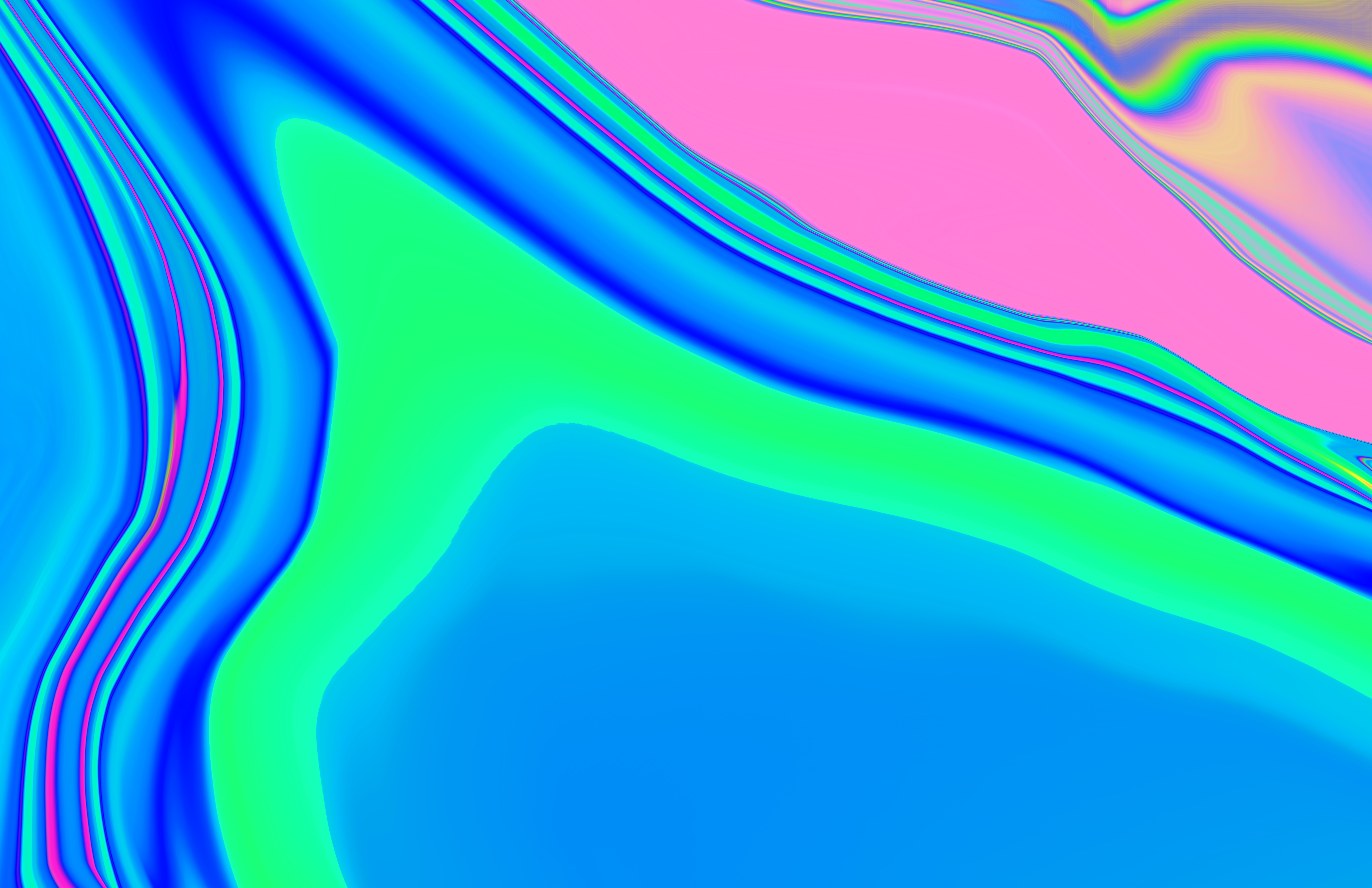

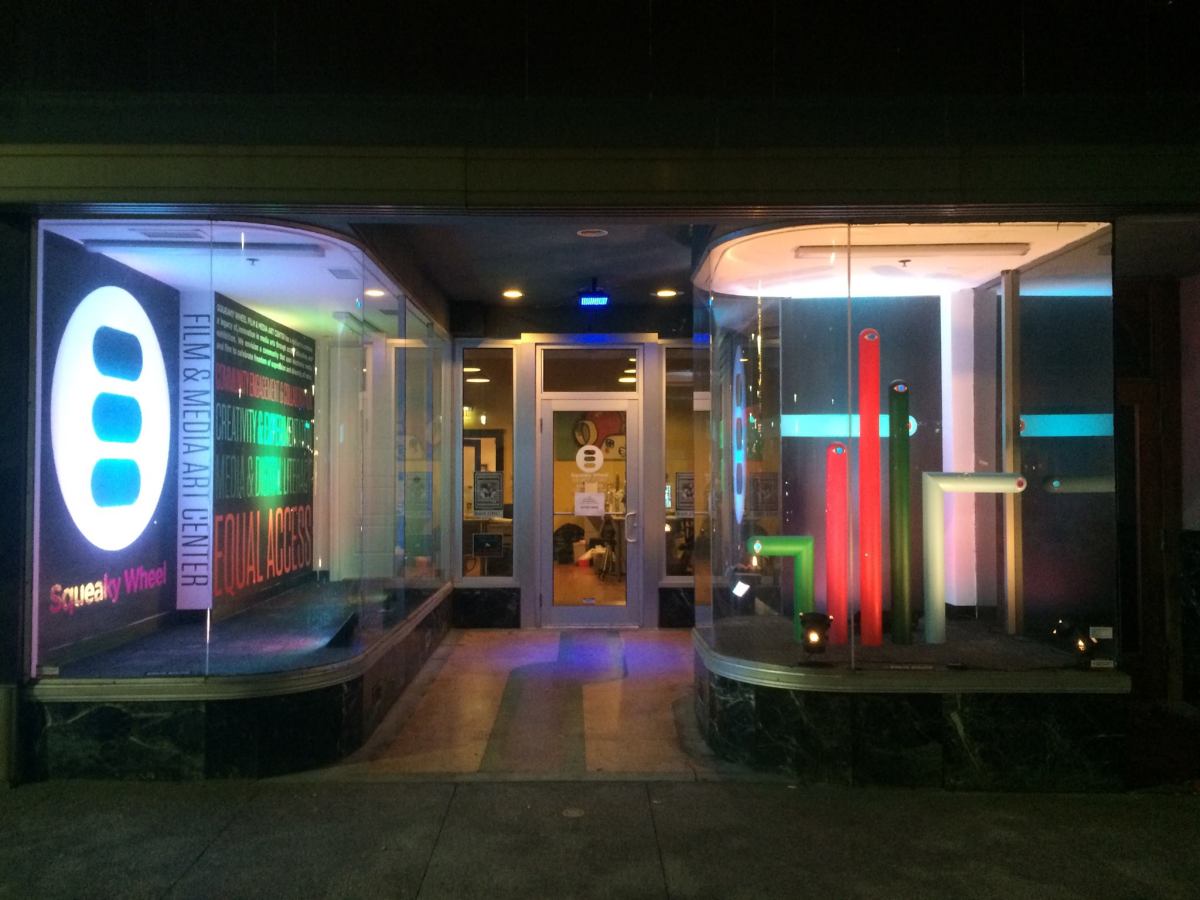


.jpg)

